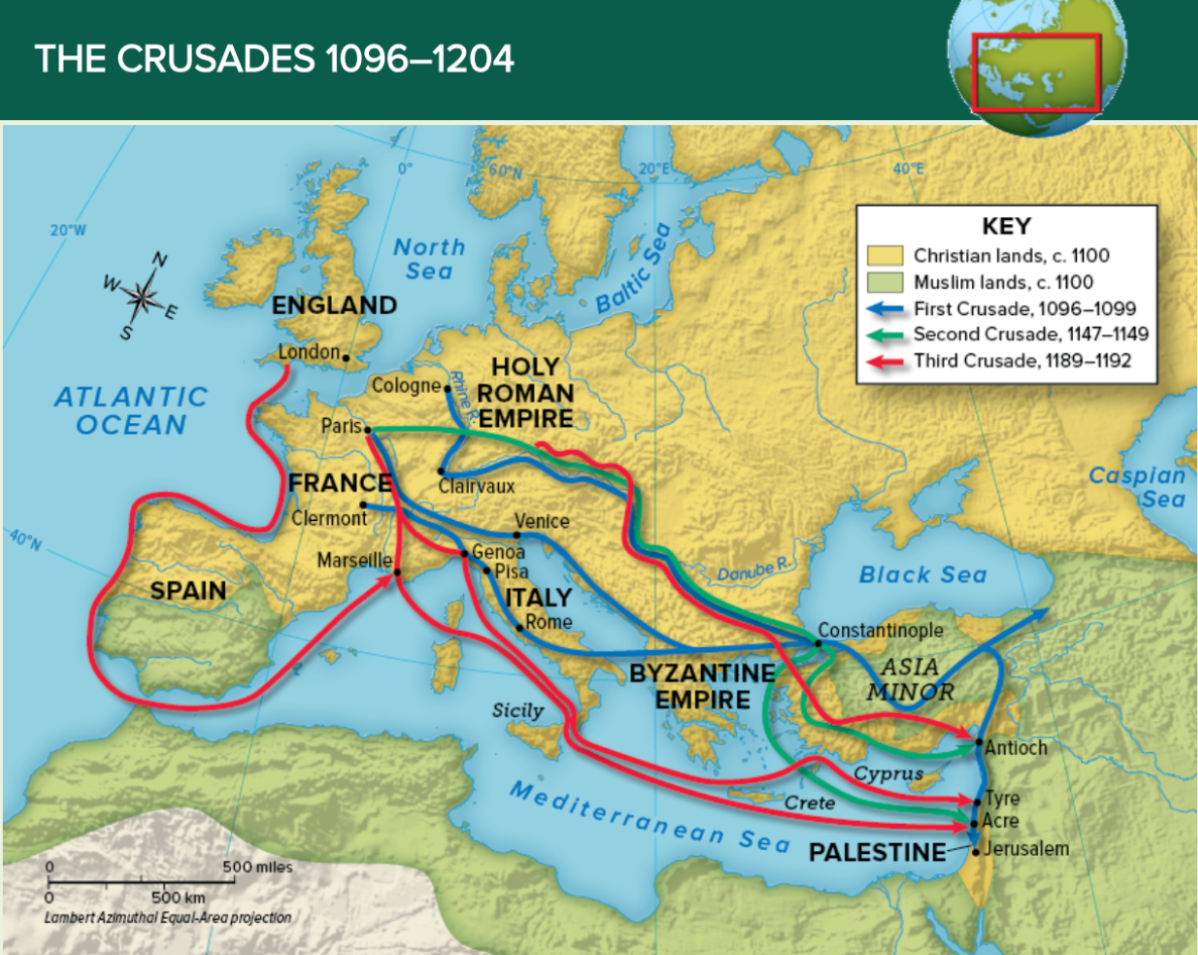Bismillah
The 6th century Hijri (1106-1202 CE) was a time of both significant turmoil and intellectual flourishing within the Islamic world.
This period was marked by political fragmentation and external threats, particularly the Crusades, while also witnessing substantial advancements in Islamic scholarship.
The Crusades
The most significant external conflict during this century was the continued Crusades.
The Crusaders, primarily from Europe, sought to gain control over the Holy Land, and after the initial success of the First Crusade in the late 11th century, they established several Crusader states in the Levant.
This period saw key Muslim leaders, such as Nur al-Din Zangi and Salah al-Din (Saladin), rise to prominence as defenders of the Muslim world.
Saladin’s recapture of Jerusalem in 1187 during the Battle of Hattin was a major victory, symbolizing Muslim resilience against European aggression.
This victory also paved the way for Muslim control over the Holy Land for centuries to come.
Fragmentation of the Muslim World
While external threats unified some parts of the Muslim world, internally, the Islamic empire was becoming increasingly fragmented.
The once-powerful Abbasid Caliphate, based in Baghdad, had seen its political control weaken, and several independent dynasties, such as the Seljuks in Persia and Anatolia, emerged.
Despite this fragmentation, the Abbasid Caliphate still held symbolic and religious authority over the Muslim world.
In North Africa, the rise of the Almohad dynasty in the mid-12th century displaced the Almoravids and established a new power in the Maghreb and southern Spain.
Under leaders like Ibn Tumart and Abd al-Mu’min, the Almohads sought to reform and strengthen Islamic practices and beliefs in their territories, providing an important counterweight to European Christian powers.
Advances in Islamic Scholarship
The 6th century Hijri was also a golden age for Islamic scholarship.
Scholars like Ibn al-Jawzi and al-Ghazali produced works that would continue to influence Islamic thought for centuries. Al-Ghazali, in particular, is known for bridging the gap between philosophy and Sufism, reconciling rational thought with Islamic spirituality.
His works, such as “The Revival of the Religious Sciences” (Ihya Ulum al-Din), remain foundational in Islamic studies.
Additionally, the field of science and medicine flourished, with contributions from scholars such as Ibn Rushd (Averroes), who was a key figure in both Islamic and Western philosophy, and Ibn Zuhr (Avenzoar), who advanced medical practices.
This intellectual vitality showed that, despite political upheavals, the Muslim world remained a center of learning and innovation.
Cultural Achievements
Islamic art, literature, and architecture continued to flourish during the 6th century Hijri.
In Al-Andalus (Islamic Spain), cities like Seville and Granada became centers of culture and learning, attracting scholars, poets, and artists from across the Islamic world.
The construction of architectural marvels, such as the Giralda in Seville and the early designs of the Alhambra in Granada, reflected the rich cultural heritage of the time.
In the East, the Seljuk Sultanate left a lasting legacy with its architectural achievements, particularly in Persia and Anatolia.
The influence of Persian culture remained strong, shaping both the literary and political spheres of the region.
Conclusion
The 6th century Hijri was a complex and dynamic period in Islamic history, characterized by political challenges and intellectual achievements.
Despite the external threats posed by the Crusades and internal fragmentation, Islamic scholarship, culture, and military leadership flourished, contributing to the ongoing development of the Muslim world.
This era highlights the resilience and adaptability of Islamic civilization in the face of adversity, as well as its profound contributions to global knowledge and culture.
Which event/person was most significant to you?
Comment Below!
